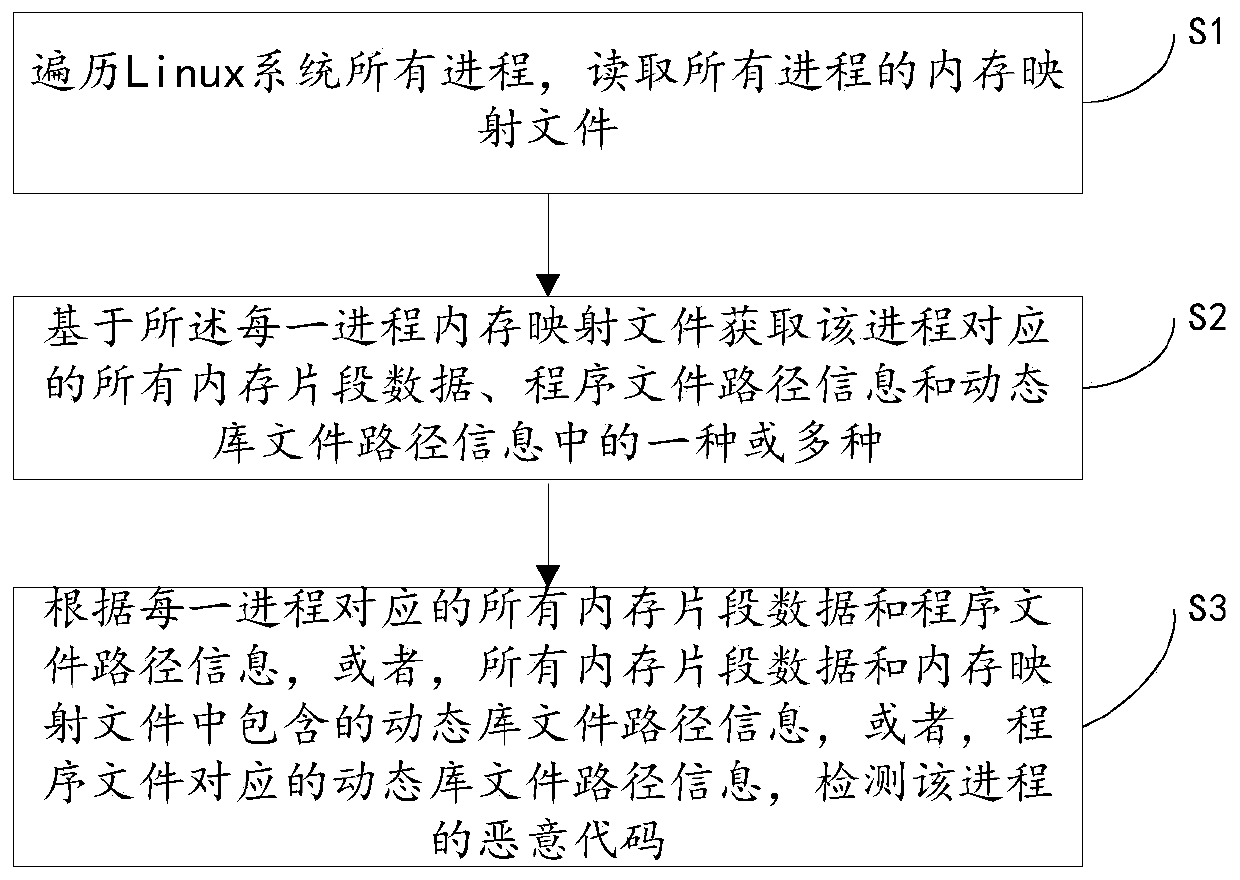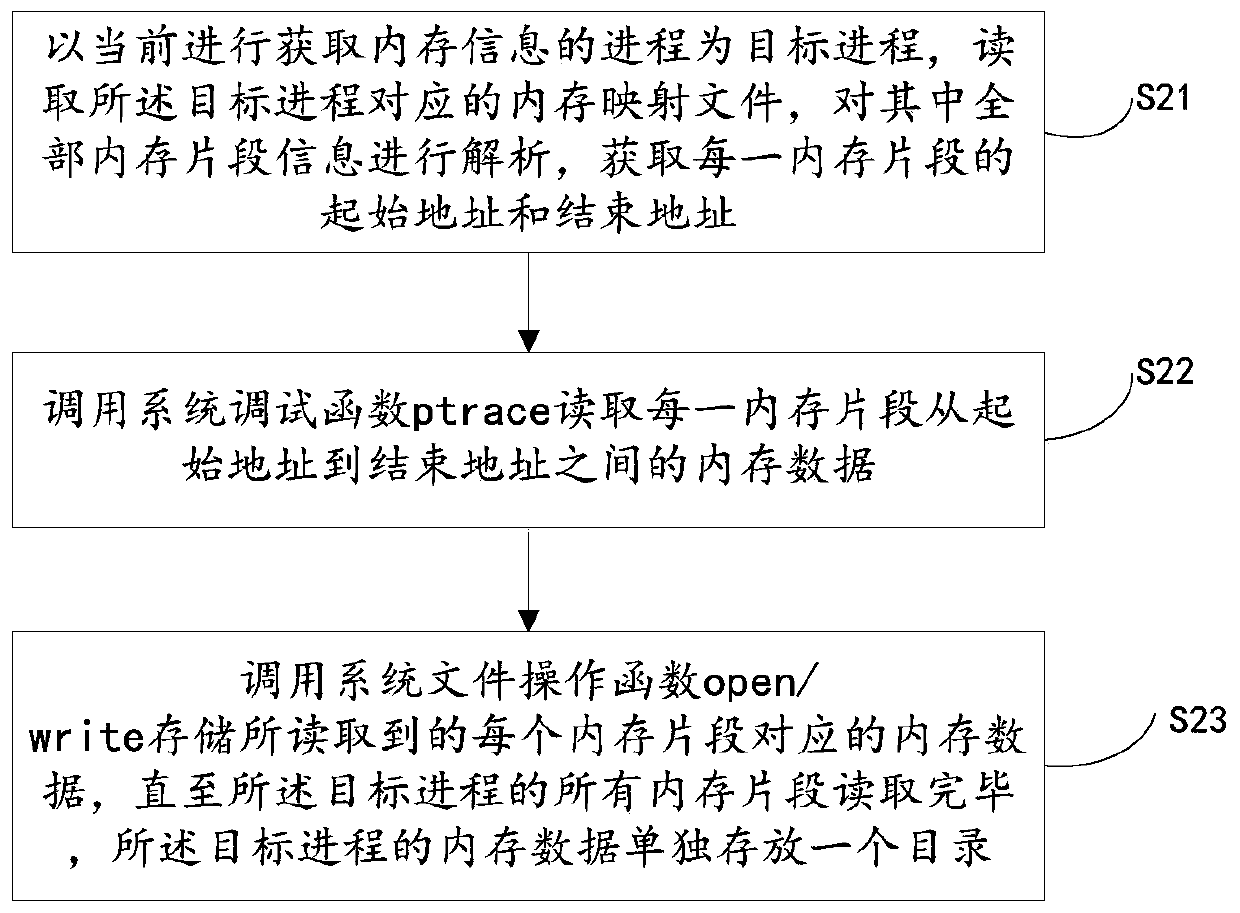Linux platform process memory malicious code evidence obtaining method, controller and medium
A malicious code and process technology, applied in the field of network security, can solve problems such as lack of malicious code detection technology, and achieve the effect of avoiding complete acquisition and independent acquisition, simple and accurate method, universality and stability
- Summary
- Abstract
- Description
- Claims
- Application Information
AI Technical Summary
Problems solved by technology
Method used
Image
Examples
Embodiment 1
[0064] Detect malicious code of each process according to all the memory segment data and program file path information corresponding to each process, including:
[0065] Step S301, obtaining a preset code segment in the process memory according to all memory segment data corresponding to each process;
[0066] Step S302, obtaining a program file according to the program file path information;
[0067] Step S303, analyzing the program header structure corresponding to the program file, to obtain a preset code segment corresponding to the program file;
[0068] Specifically, by analyzing the elf structure of the program file, the corresponding program header structure is obtained. The program header contains the layout of the file in memory when the file is running. The program linker (a necessary tool in the code compilation process) links many program segments (ie sections) are connected as a memory segment (ie segment), each segment has different purposes and memory permiss...
Embodiment 2
[0071] The malicious code of each process is detected according to all the memory segment data corresponding to each process and the dynamic library file path information contained in the memory-mapped file, including:
[0072] Step S311, obtaining a preset code segment in the process memory according to all memory segment data corresponding to each process;
[0073] Step S312, obtaining the dynamic library file according to the dynamic library file path information contained in the memory mapping file;
[0074] Step S313, analyzing the program header file corresponding to the dynamic library file, to obtain a preset code segment corresponding to the dynamic library file;
[0075] Specifically, the corresponding program header structure is obtained by analyzing the elf structure of the dynamic library file. As an example, the preset code segment is .text segment data.
[0076] Step S314: Compare the preset code segment in the process memory with the preset code segment corres...
Embodiment 3
[0078] According to the dynamic library file path information corresponding to the program file corresponding to each process, the malicious code of the process is detected, including:
[0079] Step S321, obtaining the dynamic library file list corresponding to the process according to the dynamic library file path information corresponding to the program file corresponding to each process;
[0080] Step S322, obtaining the dynamic library file information contained in the memory mapping file corresponding to the process;
[0081] Step S323, comparing the dynamic file information contained in the memory mapping file with the dynamic library file list;
[0082] Step S324: If the memory mapping file contains one or more dynamic files that are not in the dynamic library file list, it means that there is malicious code, and output the dynamic library file path and corresponding memory segment data.
PUM
 Login to View More
Login to View More Abstract
Description
Claims
Application Information
 Login to View More
Login to View More - R&D Engineer
- R&D Manager
- IP Professional
- Industry Leading Data Capabilities
- Powerful AI technology
- Patent DNA Extraction
Browse by: Latest US Patents, China's latest patents, Technical Efficacy Thesaurus, Application Domain, Technology Topic, Popular Technical Reports.
© 2024 PatSnap. All rights reserved.Legal|Privacy policy|Modern Slavery Act Transparency Statement|Sitemap|About US| Contact US: help@patsnap.com










